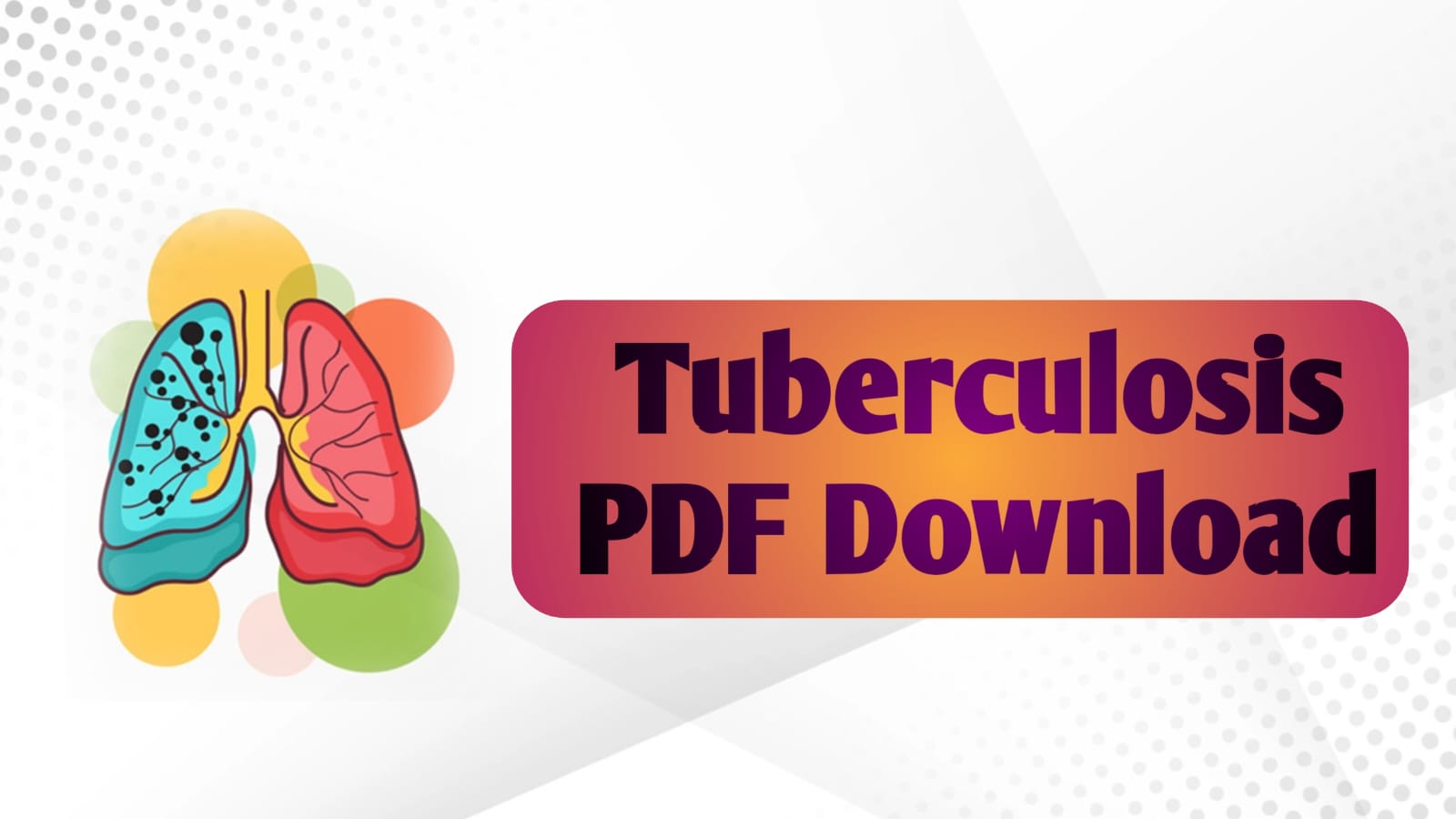Tuberculosis PDF Free Download
Tuberculosis, often referred to as TB, is a persistent infectious disease that has plagued humanity for centuries. Despite significant advancements in medical science, TB remains a major global health concern. In this article, we delve into the details of tuberculosis, its causes, symptoms, diagnosis, treatment, and preventive measures. Join us on this journey to gain a comprehensive understanding of this enduring health challenge.

What is Tuberculosis? Unveiling the Basics
Tuberculosis is a bacterial infection caused by Mycobacterium tuberculosis. It primarily affects the lungs, although it can also target other parts of the body. The bacteria spread through the air when an infected individual coughs, sneezes, or talks, putting people in close proximity at risk of inhaling the bacteria.
The Stages of Tuberculosis Infection
TB infection typically progresses through two stages: latent TB infection and active TB disease. In the latent stage, the bacteria remain dormant and do not cause symptoms. However, they can become active and multiply if the immune system weakens, leading to the development of active TB disease.
Recognizing the Symptoms
The symptoms of TB can vary depending on the area of the body affected. Common symptoms of active TB disease include persistent cough, unintentional weight loss, fever, night sweats, and fatigue. If you experience these symptoms, especially if they persist for weeks, seeking medical attention is crucial.
Diagnosing Tuberculosis
Diagnosing TB involves a combination of medical history assessment, physical examinations, and diagnostic tests. These tests may include chest X-rays, sputum smear microscopy, and molecular tests like PCR. Early and accurate diagnosis is essential to prevent the spread of the disease.
Treatment Options
TB is treatable, and the standard treatment regimen involves a combination of antibiotics taken over several months. It’s crucial to complete the entire course of antibiotics to ensure the bacteria are fully eradicated. Drug-resistant TB is a growing concern and requires specialized treatment.
Preventive Strategies
Preventing TB involves a multi-faceted approach. Vaccination with the Bacillus Calmette-Guérin (BCG) vaccine can offer some protection, particularly against severe forms of the disease in children. Additionally, maintaining good hygiene, proper ventilation, and avoiding close contact with infected individuals can help reduce the risk of transmission.
The Global Impact of Tuberculosis
Tuberculosis is a global health crisis, particularly in low- and middle-income countries with limited access to healthcare resources. Efforts to combat TB include improving diagnostic tools, increasing access to treatment, and raising awareness about prevention.
Tuberculosis and HIV Co-Infection
Tuberculosis and HIV often coexist, creating a dangerous synergy. HIV weakens the immune system, making individuals more susceptible to TB infection. Public health programs targeting both diseases are essential to prevent the dual burden they pose.
Also Read This : Every Praise Lyrics PDF Download
The Social Stigma Surrounding TB
Tuberculosis is not only a medical challenge but also a social one. Stigma and discrimination associated with the disease can hinder individuals from seeking timely medical care. Raising awareness and promoting education can help dispel myths and reduce stigma.
Tuberculosis Research and Innovations
Ongoing research aims to develop more effective diagnostic tools, shorter treatment regimens, and novel drug therapies for drug-resistant TB. Innovations in healthcare delivery are also being explored to improve access to care, especially in underserved regions.
Conclusion
Tuberculosis remains a significant global health issue, requiring collective efforts from healthcare professionals, policymakers, and society as a whole. By understanding the disease, its progression, and preventive measures, we can work together to reduce its impact and eventually eliminate its threat.
Unique FAQs
Q: Can I get TB from someone who has latent TB infection?
A: While the risk is lower than with active TB disease, there is still a possibility of transmission.
Q: Is TB only a lung disease?
A: No, TB can affect other parts of the body, including the kidneys, spine, and brain.
Q: Can I stop TB treatment once I start feeling better?
A: No, completing the full course of treatment is essential to prevent drug resistance.
Q: Can TB be cured completely?
A: Yes, with timely and proper treatment, TB can be cured in most cases.
Q: How can I contribute to TB eradication?
A: You can contribute by raising awareness, supporting organizations working on TB, and following preventive measures.
Click Here To Download PDF For Free








